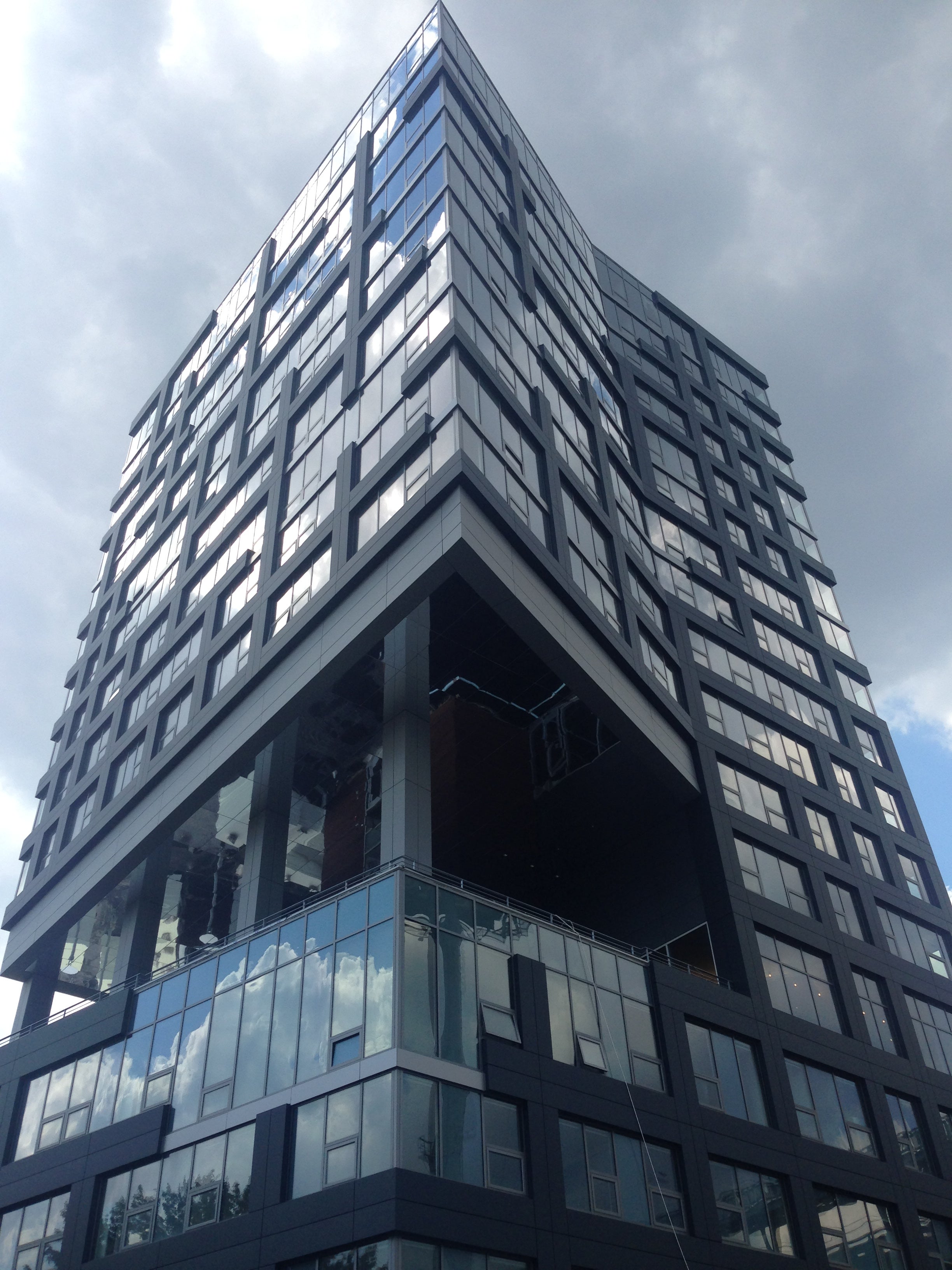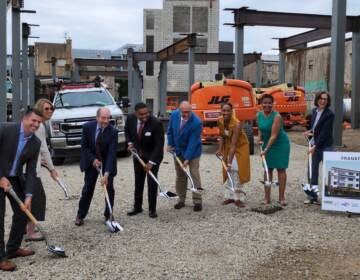Council wants to make developers build inclusive, affordable housing

At Thursday’s City Council meeting, the last before the summer recess, Councilwoman Maria Quiñones-Sánchez introduced a bill that would require many private developers to build permanently affordable housing units. The legislation would sweeten this potentially bitter pill by increasing height, density, and floor area ratio limits in many zoning districts, allowing larger buildings with more units.
The bill would require the construction of one unit of affordable housing for every nine of market-rate housing in developments where 10 or more units are being built or “substantially improved.” Of the 10 percent of units that are required to be affordable, one quarter would have to be offered on the site of the project itself, while the others could be provided by building the units elsewhere, by paying into the Philadelphia Housing Trust Fund, or by leasing or selling units to the Philadelphia Housing Authority (PHA).
The new requirement would override the city’s current, incentive-based program to encourage mixed-income residential development by offering zoning perks—like allowing more density or taller buildings than the zoning code would normally allow — in exchange for developers including affordable units in otherwise market-rate projects.
Quiñones-Sánchez’s bill, by contrast, would require developers to build housing and greatly increase the maximum potential density and height limits in many of the city’s zoning categories.
The bill’s co-sponsors included Council President Darrell Clarke, Jannie Blackwell, and Kenyatta Johnson. All the sponsors represent districts with large numbers of impoverished residents as well as some of the hottest real estate markets in the city.
“In conversation with developers around the city, we’ve realized that we have a lot of opportunity and growth potential if we look at our zoning code,” said Councilwoman Quiñones-Sánchez. “It should not just be about One Water Street [a luxury apartment tower in Old City that used the current mixed-income zoning bonus]. As development spreads to all the neighborhoods, what are the incentives folks need to build the affordable housing that government alone cannot do?”
The legislation, which amends the city’s housing code, would increase height limits to 45 feet on many lots zoned for smaller-scale multi-family buildings and along many neighborhood commercial corridors, but only where developers will be required to build the affordable units. (If you build eight or fewer in such a zoning district, for example, the height bonuses would not apply.) This is intended as an offset to the cost of building the affordable housing.
Similarly, the legislation would increase the maximum number of dwelling units allowed in these areas by 50 percent, if they hit the unit threshold.
The maximum base floor area ratio (FAR), which determines how tall and wide a building can be, would be increased by a factor of 1.3 in 13 different zoning categories in such cases as well—a substantial increase that could allow much larger buildings in some residential areas of the city.
“In order for developers to provide affordable housing development, they need to have an ability to get more height,” said Quiñones-Sánchez.
Affordability in the bill would be defined in two ways, one for the “metropolitan core” — defined as much of University City east 38th Street and Center City from Washington Avenue to Girard Avenue — and one for the rest of the city.
In the core, affordable units would be rented to those earning up to 50 percent of area median income or sold to buyers up to 80 percent of area median income (AMI). For context, 50 percent of AMI is $42,000 for a family of four.
In the rest of the city the definition of affordability would be even more generous. In most of Philadelphia, affordability would be defined as 30 percent of AMI for renters and 50 percent for owners. 30 percent of AMI is $24,300 for a family of four.
“As far as I know, I haven’t seen any other city that has an inclusionary housing program that targets people at 30 percent of area median income,” says Beth McConnell, policy director for the Philadelphia Association of Community Development Corporations. “That’s a very significant part of this legislation because it helps people who need affordable homes the most.”
The clause in the bill that would allow developers to lease or sell affordable units to the housing authority is meant to make helping those poorest tenants easier (although it isn’t clear how exactly that would work). It is also unclear if the housing authority, which is facing the likelihood of sharp budget cuts from the Trump administration, would have the capacity to handle these new units.
“There’s a framework for helping people making $20,000 a year, that’s why in the legislation we bring in the housing authority as a partner,” said Councilwoman Quiñones-Sánchez. “Government funding alone can’t meet our needs, but this will allow us to utilize and leverage the capacity of the private sector.”
That’s not the only way in which the affordability provisions stand out. The bill also stipulates that all affordable housing created by this inclusionary housing program, for ownership or rent, must remain income-restricted for 99 years. (Many public incentive programs of recent decades have allowed developers to pull away from the affordability requirement after a shorter period, often between 15 and 30 years.)
The bill requires that the 25 percent of the affordable units provided at the building site be “reasonably dispersed” throughout the building and that all the tenants have access to the same amenities. In New York City, units recently created by its inclusionary housing programs have been critiqued for providing different amenities and even different entrances for low-income tenants.
In Philadelphia, the most recent controversy around inclusionary housing was around One Water Street, one of the only buildings to have taken advantage of the city’s inclusionary zoning bonuses. In that case the developer decided at the last minute to not build the affordable units and sought different height and density bonuses instead. In the end, it paid into the Philadelphia Housing Trust Fund.
Sanchez’s bill has sharper teeth to prevent such an occurrence from happening again, although a package of alterations to the city’s zoning code passed earlier this year already sought to protect the existing zoning bonuses from such occurrences. The new legislation would punish those who do not comply by revoking building permits, certificates of occupancy, and rental licenses. There is also a $500 a day fine for non-compliance.
Developer reaction to the bill has thus far been notably temperate, despite the ambitious nature of the legislation. “The BIA Board of Directors have been in discussions with City Council for months regarding mixed-income housing,” Brian Emmons, president of the Building Industry Association (BIA), told PlanPhilly over email. “The BIA will be working with the sponsors of the legislation over the summer and look forward to creating a solution that will keep development moving and solve the affordability issue that we have in Philadelphia.”
The BIA’s moderate response is probably related to the fact that the legislation was introduced at the end of a session and will be discussed throughout the summer with the Mixed-Income Housing Working Group, a group of stakeholders and political representatives. Changes are likely even before the bill reaches committee in the fall.
What skeptics there were refused to speak on the record. But there are concerns that such a law would dampen development and that similar efforts in cities like New York—and there are hundreds of such policies in the United States—have worked where markets are red hot.
In a press release, Council President Clarke praised the bill for combating housing segregation and economic inequality. In an interview with PlanPhilly, Councilwoman Quiñones-Sánchez was quick to praise Clarke for his introduction of the city’s first inclusionary housing bill back in 2007.
But that effort came just as the housing crisis kicked off and it was never utilized. Since then the concept of introducing more robust inclusionary housing legislation has been knocking around City Hall for years. Now she believes its time has come.
“In council, we hear every day about people feeling pushed out and we really believe that we have an opportunity to bring affordable housing to the neighborhoods,” said Quiñones-Sánchez. “We’d like to generate units in whatever development can still occur in the heavily developed core of the city, but this is really about how this development spreads.”
WHYY is your source for fact-based, in-depth journalism and information. As a nonprofit organization, we rely on financial support from readers like you. Please give today.






